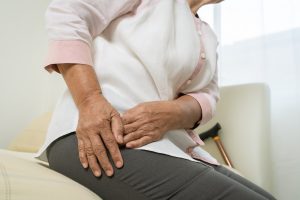
Sometimes managing joint pain takes a more active approach. Doing little things every day – slight adaptations to your routine – may go a long way, as well.
Relieving the pressure on your joints and doing your best to avoid stiffness may help cut down on pain and improve mobility to make your life a little easier.
Here are a few techniques to try:
Stay Mobile: If you can keep moving, although it may go against what you think, you may cut down on joint pain. Staying seated or sedentary for too long can cause joints to seize up and stiffen. Try to get up, stretch, and move around every 15 minutes.
Ease Stress When You Can: Try to avoid positions or movements that put extra weight, or stress, on your joints. Using a cloth in your palm to help open a tight jar, for example, may help ease wrist pain by transferring more stress to the shoulder. Even better, you can buy a jar opener or use jars that are easier to open.
Use Your Muscles: Open doors with your sidearm or shoulder, or carry heavy bags on your forearm instead of griping them in your hands. When walking upstairs, lead with your stronger leg.
Make Home Modifications When Necessary: Installing an electric can opener or grips next to the toilet can help keep the stress off joints. You can also reorganize your belongings so the things you use most are easiest to reach.
These are all little things you can do to potentially ease joint pain and keep it from worsening. Ask for help when you need it, and do your best to keep up with pain management techniques.